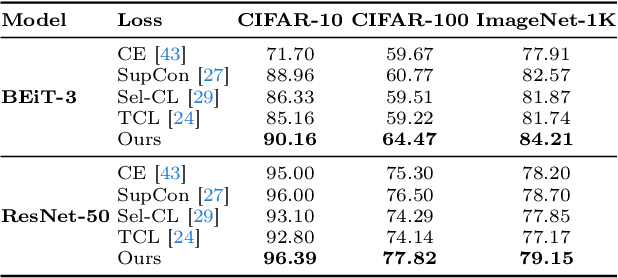Understanding and Mitigating Human-Labelling Errors in Supervised Contrastive Learning
Paper and Code
Mar 10, 2024



Human-annotated vision datasets inevitably contain a fraction of human mislabelled examples. While the detrimental effects of such mislabelling on supervised learning are well-researched, their influence on Supervised Contrastive Learning (SCL) remains largely unexplored. In this paper, we show that human-labelling errors not only differ significantly from synthetic label errors, but also pose unique challenges in SCL, different to those in traditional supervised learning methods. Specifically, our results indicate they adversely impact the learning process in the ~99% of cases when they occur as false positive samples. Existing noise-mitigating methods primarily focus on synthetic label errors and tackle the unrealistic setting of very high synthetic noise rates (40-80%), but they often underperform on common image datasets due to overfitting. To address this issue, we introduce a novel SCL objective with robustness to human-labelling errors, SCL-RHE. SCL-RHE is designed to mitigate the effects of real-world mislabelled examples, typically characterized by much lower noise rates (<5%). We demonstrate that SCL-RHE consistently outperforms state-of-the-art representation learning and noise-mitigating methods across various vision benchmarks, by offering improved resilience against human-labelling errors.
 Add to Chrome
Add to Chrome Add to Firefox
Add to Firefox Add to Edge
Add to Edge